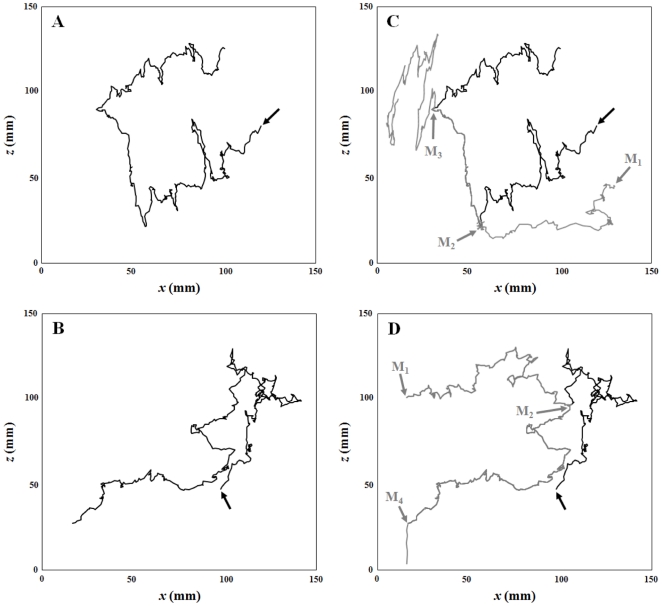Figure 5. Temora longicornis.
Two female swimming paths (A,B) that led to unsuccessful (C) and successful (D) male mate-searching behavioural sequences. The swimming paths of females and males are shown in black and grey, respectively. The black arrows indicate the beginning of the female swimming paths; the grey arrows indicate the beginning of male swimming paths (M1), the detection of the female pheromone trail by the male and the subsequent initiation of a mating behavioural sequence in which the male follows the female's trail (M2), a contact event where the male failed to capture the female (M3), and a contact event followed by a successful capture (M4) after which male and female sink slowly together.

